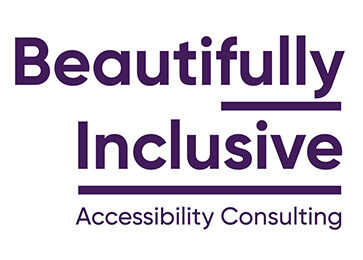Accessibility is not always what it seems.
A few years ago, when I was a full-time wheelchair user, my wife and I decided to go out for lunch. We called a sushi place that we wanted to try, just to ask if they were accessible. The response was – Yes, we are accessible, no problem! Great! We loaded up and headed for some delicious sushi.
Winter is overly dramatic here in Alberta, so there was plenty of snow and ice, and it was cold. These things matter because if I was alone in this situation, it would have doubled in stress/annoyance.
We arrived at the restaurant to see three stairs at the front of the building, and no ramp or even handrails for people walking up the stairs to hold onto.
Sometimes there is a ramp at the back of the building though, (which we do not like because it is not very inclusive, I want to go through the front door with my friends and family, but I digress). A bit disappointed, my wife went around to the back of the building to find the ramp for me, she came back and said there was no ramp anywhere.
Wait… when I phoned they told me it was accessible?!
My wife went into the restaurant and spoke to the staff, who informed her that they ARE accessible. Moments later, an employee came running outside carrying a sheet of plywood that he then laid across the steps and gestured to grandly, as though he were presenting us with the biggest ruby we would ever see.
No, I did not try to wheel up his ramp. We loaded up, left the restaurant, and headed home.
The problem with accessibility is that everyone has a different understanding of what it is. We do not have universal expectations beyond the bare minimum (building code). The person with the disability must be VERY clear when asking about accessibility, we cannot make assumptions.
I never went anywhere without calling ahead, and I always asked very direct questions such as:
- Is your entrance accessible
- Are there any stairs?
- Do you have a permanent ramp?
- Where is the ramp located?
- Does the ramp have rails?
- Is there more than one floor inside the space?
- Are all the spaces I need access to on the same floor?
- Is there an elevator?
- What kind of seating do you have – is it tall, short, with or without arms, is it on a platform base? Do you have booths?
- What floor are your bathrooms located on?
- Do you have an accessible stall in the bathroom large enough for a wheelchair? Are there grab bars?
All these little details make the difference between bare minimum (building code) and wonderfully accessible. It is frustrating that people with disabilities must work to ensure accessibility before we can even participate, and it is exhausting.
I want to see THOUGHTFUL, INCLUSIVE, UNIVERSAL DESIGN as the DEFAULT. I want to KNOW that my needs have been considered without needing to check.
My disability is not what prevents me from participating fully in our world, barriers and limitations created and perpetuated by society CHOOSING to be inaccessible are what prevent my participation. We can (and need to) do better.

